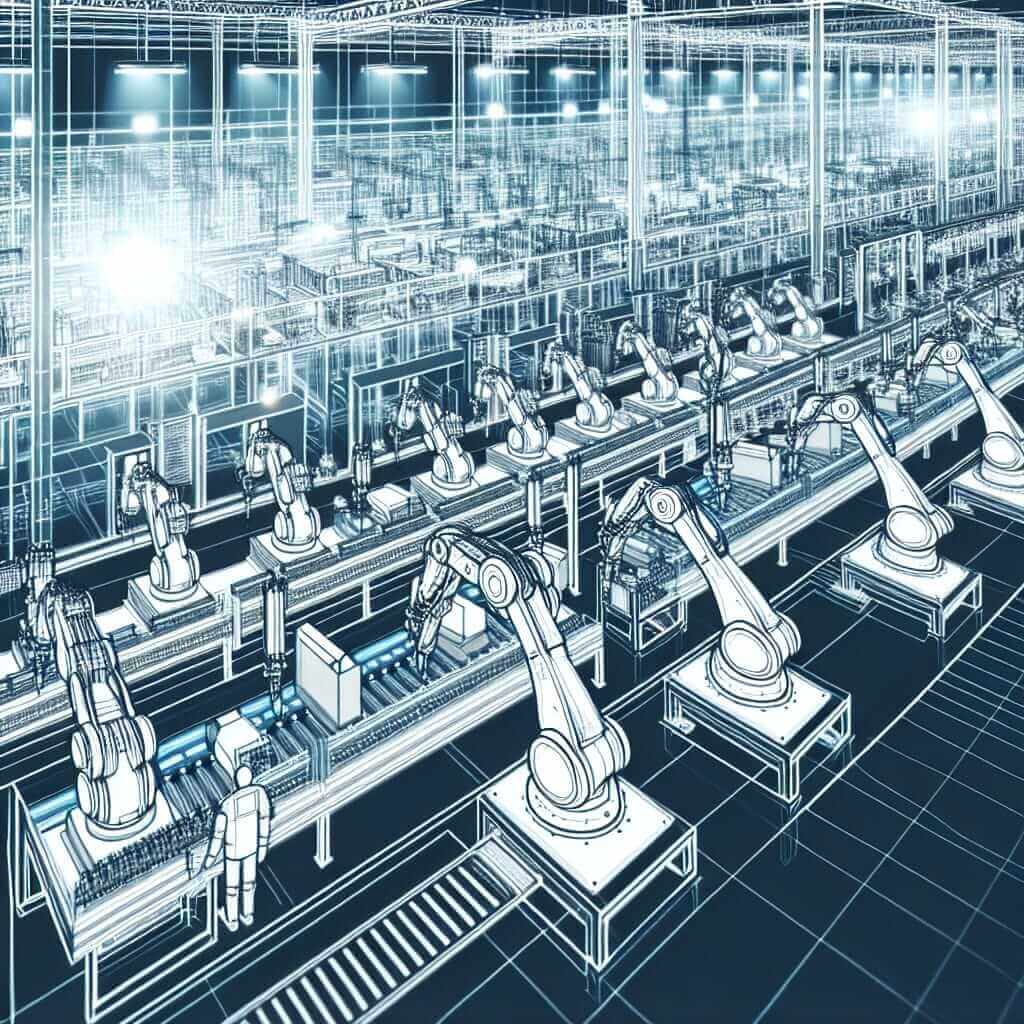Automation, particularly in relation to economic productivity, has been a hot topic in recent IELTS Writing Task 2 exams. The topic’s relevance stems from the rapid advancements in technology and its impact on various sectors. Understanding the nuances of this subject can significantly enhance the quality of your essay. This guide provides an in-depth analysis and a sample essay to help IELTS aspirants tackle this topic effectively.
Common IELTS Task 2 Prompts Related to Automation and Productivity
- Some people believe that the automation of industries produces more economic benefits than drawbacks. To what extent do you agree or disagree?
- Discuss the advantages and disadvantages of automation in increasing economic productivity.
- The rise of automation has led to significant changes in economic productivity and employment. What are the potential effects of these changes? Provide examples to support your view.
Selecting a Prompt for Analysis
For this guide, we will choose the first prompt:
“Some people believe that the automation of industries produces more economic benefits than drawbacks. To what extent do you agree or disagree?”
Analyzing the Prompt
-
Identifying Keywords and Key Phrases:
- Automation of industries
- Economic benefits
- Drawbacks
- To what extent do you agree or disagree?
-
Understanding Task Requirements:
- Discuss both sides (benefits and drawbacks) of automation on economic productivity.
- Take a clear stance (agree, disagree, or partially agree/disagree) and justify it with examples.
Sample Essay
Introduction
Automation, defined as the use of technology to perform tasks without human intervention, has pervaded almost every industry today. Proponents argue that this advancement ushers in unprecedented economic benefits, while critics spotlight its significant drawbacks. This essay will delve into both perspectives and elucidate why the economic advantages of automation ultimately outweigh the disadvantages.
Economic Benefits of Automation
First and foremost, automation enhances productivity and efficiency. Machines and robots can perform repetitive tasks faster and with greater precision than human workers, leading to increased output. For instance, automated assembly lines in manufacturing have drastically reduced production time and errors, enabling companies to scale their operations.
Furthermore, automation drives cost reductions. By minimizing the reliance on human labor, businesses can significantly cut operational costs. Lower costs translate to lower prices for consumers, which can boost demand and stimulate economic growth. Additionally, savings on labor can be reinvested into innovation and development, further bolstering an economy’s competitive edge.
Drawbacks of Automation
Conversely, automation poses notable challenges, particularly in employment. The displacement of human workers by machines can lead to job losses, especially in low-skill sectors. This unemployment can exacerbate economic inequality and create socio-economic instability.
Moreover, the initial investment in automation technology can be prohibitively expensive for small and medium-sized enterprises (SMEs). The disparity between larger companies that can afford such investments and smaller ones that cannot may widen, potentially stifling competition and innovation within the market.
Weighing the Benefits Against the Drawbacks
While the drawbacks are significant, they can be mitigated through strategic measures. Reskilling and upskilling programs can equip workers with skills demanded by a tech-driven economy, thereby minimizing job losses. Governments and industries must collaborate to ensure that the benefits of automation are equitably distributed and accessible to all market participants.

Conclusion
In conclusion, the automation of industries undeniably offers substantial economic benefits, including enhanced productivity and reduced costs. Although it presents challenges, particularly concerning employment and initial investment costs, these can be effectively addressed through comprehensive policies and strategic planning. Thus, I firmly believe that the advantages of automation in economic productivity far surpass its drawbacks. (Word count: 348)
Key Points to Remember When Writing on This Topic
- Stay balanced: Address both benefits and drawbacks comprehensively.
- Use specific examples: Cite real-world instances to substantiate your points.
- Be clear about your stance: Clearly indicate your position in the introduction and conclusion.
Vocabulary and Grammar Considerations
-
Economic Vocabulary
- Productivity (n) [prɒdʌkˈtɪvɪti]: The rate of production, especially in relation to work efficiency.
- Efficiency (n) [ɪˈfɪʃnsi]: The ability to accomplish a task with minimal waste of time and effort.
- Displacement (n) [dɪsˈpleɪsmənt]: The moving of something from its original place, often referring to jobs.
- Reskilling (n) [ˌriːˈskɪlɪŋ]: The process of learning new skills to do a different job.
-
Grammar Tips
- Use a mix of simple, compound, and complex sentences to convey clear and nuanced arguments.
- Avoid passive voice where possible to make your statements more direct and active.
Conclusion
Automation’s impact on economic productivity is multifaceted, involving both beneficial and adverse elements. By understanding how to balance these aspects in your essay, you can present a well-rounded argument that showcases your critical thinking skills. Remember, practice makes perfect—continually refine your writing techniques to master IELTS Writing Task 2.
Additional Prompts to Practice
- Discuss the impact of automation on both economic productivity and unemployment.
- Evaluate how automation in the service industry affects economic productivity.
- What are the potential long-term effects of widespread automation on economic structures?
By exploring these prompts, you can enhance your preparedness for any variation of this topic in your IELTS exam. Happy writing!